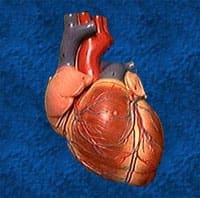| Therapy: Patients With Refractory End-Stage HF (Stage D) | ||||||||||||||||||||||||||||||||||||||||||||||||||||||||||||||||||||||||||||||||||||||||||||||||||||||||||||||||||||||||||||||||||||||||||||||||||||||||||||||||||||||||||||||||||||||||||||||||||||||||
 |
||||||||||||||||||||||||||||||||||||||||||||||||||||||||||||||||||||||||||||||||||||||||||||||||||||||||||||||||||||||||||||||||||||||||||||||||||||||||||||||||||||||||||||||||||||||||||||||||||||||||
Overview of Stage D |
||||||||||||||||||||||||||||||||||||||||||||||||||||||||||||||||||||||||||||||||||||||||||||||||||||||||||||||||||||||||||||||||||||||||||||||||||||||||||||||||||||||||||||||||||||||||||||||||||||||||
| Stage D Refractory HF (heart failure) requiring specialized interventions e.g., Patients who have marked symptoms at rest despite maximal medical therapy e.g., those who are recurrently hospitalized or cannot be safely discharged from the hospital without specialized interventions) Therapy Goals - Appropriate measures under Stages A, B, C - Decision re: appropriate level of care Options - Compassionate end-of-life care/hospice - Extraordinary measures - heart transplant - chronic inotropes - permanent mechanical support - experimental surgery or drugs |
||||||||||||||||||||||||||||||||||||||||||||||||||||||||||||||||||||||||||||||||||||||||||||||||||||||||||||||||||||||||||||||||||||||||||||||||||||||||||||||||||||||||||||||||||||||||||||||||||||||||
Summary of therapy options - Stage D |
||||||||||||||||||||||||||||||||||||||||||||||||||||||||||||||||||||||||||||||||||||||||||||||||||||||||||||||||||||||||||||||||||||||||||||||||||||||||||||||||||||||||||||||||||||||||||||||||||||||||
Before a patient is considered to have refractory HF, physicians should confirm the accuracy of the diagnosis, identify any contributing conditions, and ensure that all conventional medical strategies have been optimally employed. Measures listed as Class I recommendations for patients in stages A, B, and C are also appropriate for patients in end-stage HF . When no further therapies are appropriate, careful discussion of the prognosis and options for end-of-life care should be initiated. Recommendations
1. Meticulous identification and control of fluid retention is recommended in patients with refractory end-stage HF. (Level of Evidence: B) 2. Referral for cardiac transplantation in potentially eligible patients is recommended for patients with refractory end-stage HF. (Level of Evidence: B) 3. Referral of patients with refractory end-stage HF to an HF program with expertise in the management of refractory HF is useful. (Level of Evidence: A) 4. Options for end-of-life care should be discussed with the patient and family when severe symptoms in patients with refractory end-stage HF persist despite application of all recommended therapies. (Level of Evidence: C) 5. Patients with refractory end-stage HF and implantable defibrillators should receive information about the option to inactivate defibrillation. (Level of Evidence: C)
1. Consideration of an LV assist device as permanent or ?destination? therapy is reasonable in highly selected patients with refractory end-stage HF and an estimated 1-year mortality over 50% with medical therapy. (Level of Evidence: B)
1. Pulmonary artery catheter placement may be reasonable to guide therapy in patients with refractory end-stage HF and persistently severe symptoms. (Level of Evidence: C) 2. The effectiveness of mitral valve repair or replacement is not established for severe secondary mitral regurgitation in refractory HF. (Level of Evidence: C) 3. Continuous intravenous infusion of a positive inotropic agent may be considered for palliation of symptoms in patients with refractory end-stage HF. (Level of Evidence: C)
1. Partial left ventriculectomy is not recommended in patients with nonischemic cardiomyopathy and refractory end-stage HF. (Level of Evidence: C) 2. Routine intermittent infusions of positive inotropic agents are not recommended for patients with refractory end-stage HF. (Level of Evidence: B)
|
||||||||||||||||||||||||||||||||||||||||||||||||||||||||||||||||||||||||||||||||||||||||||||||||||||||||||||||||||||||||||||||||||||||||||||||||||||||||||||||||||||||||||||||||||||||||||||||||||||||||
Reference |
||||||||||||||||||||||||||||||||||||||||||||||||||||||||||||||||||||||||||||||||||||||||||||||||||||||||||||||||||||||||||||||||||||||||||||||||||||||||||||||||||||||||||||||||||||||||||||||||||||||||
| Direct quotes from this valuable reference: Hunt SA, Abraham WT, Chin MH, Feldman AM, et al. ACC/AHA 2005 Guideline Update for the Diagnosis and Management of Chronic Heart Failure in the Adult: a report of the American College of Cardiology/American Heart Association Task Force on Practice Guidelines (Writing Committee to Update the 2001 Guidelines for the Evaluation and Management of Heart Failure): developed in collaboration with the American College of Chest Physicians and the International Society for Heart and Lung Transplantation: endorsed by the Heart Rhythm Society. Circulation. 2005 Sep 20;112(12):e154-235. Epub 2005. Link: http://circ.ahajournals.org/cgi/content/full/112/12/e154 |
||||||||||||||||||||||||||||||||||||||||||||||||||||||||||||||||||||||||||||||||||||||||||||||||||||||||||||||||||||||||||||||||||||||||||||||||||||||||||||||||||||||||||||||||||||||||||||||||||||||||
Therapy: Patients With Refractory End
Reference(s)
National Institutes of Health, U.S. National Library of Medicine, DailyMed Database.
Provides access to the latest drug monographs submitted to the Food and Drug Administration (FDA). Please review the latest applicable package insert for additional information and possible updates. A local search option of this data can be found here.

